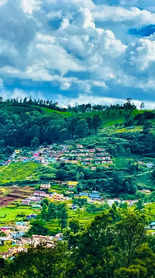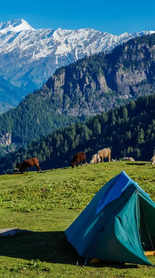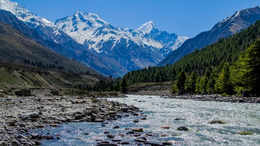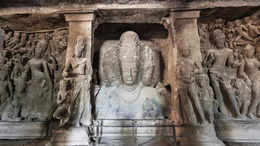Fujian Tulou: ancient earthen castles of China
Times of IndiaAmusing Planet/SIGHTSEEING, FUJIAN/ Updated : Jun 2, 2014, 18:12 IST
Synopsis
Fujian Tulou is a collection of earthen houses, impenetrable by outsiders, built between the 12th and the 20th centuries, located in the mountainous regions of southeast Fujian in China. Tulous were built for defence against armed … Read more
Fujian Tulou is a collection of earthen houses, impenetrable by outsiders, built between the 12th and the 20th centuries, located in the mountainous regions of southeast Fujian in China. Tulous were built for defence against armed bandits that plagued southern China from the 12th to the 19th century. Read less

Fujian Tulou is a collection of earthen houses, impenetrable by outsiders, built between the 12th and the 20th centuries, located in the mountainous regions of southeast Fujian in China. A tulou is usually large, several storeys high, and built along an inward-looking, circular or square floor plan. The doughnut shaped house has a central open courtyard and can house up to 800 people or 80 families. The outside wall is comprises of a solid block served by a single entrance, and windows to the outside are located only above the first floor. Tulous were built for defence against armed bandits that plagued southern China from the 12th to the 19th century. The people of southern Fujian first built strongholds on top of mountains as a defense. These early strongholds later evolved into Fujian Tulou. The fortified outer structures are formed by compacting earth, mixed with stone, granite, bamboo, wood and other readily available materials, to form walls up to six feet thick. Branches, strips of wood and bamboo chips are often laid in the wall as additional reinforcement. The entrance is guarded by four-five-inch-thick wooden doors reinforced with an outer shell of iron. The top level of these earth building have gun holes.


The tulous are as solid as a castle and offered specular resistance against cannon fire. In 1934, a group of uprising peasants of Yongding County occupied a tulou to resist the assault of the army, which fired 19 cannon shots at that tulou, but made only a small dent on the outside wall.


Housing an entire clan, the whole structure functioned as a small village. The buildings were divided vertically between families, with each disposing of two or three rooms on each floor. In contrast with their plain exterior, the insides of the tulou were built for comfort—warm in winter and cool in summer—and were highly decorated. The rooms are well-lit, well-ventilated, windproof, and the entire building earthquake-proof.

There are more than 20,000 tulous in Fujian, and although they can also be found in other parts of China, they are all referred to as Fujian Tulou after UNESCO adopted that name for all dwellings of this type. A total of 46 Fujian Tulou sites have been inscribed in 2008 by UNESCO as World Heritage Sites.

Refrain from posting comments that are obscene, defamatory or inflammatory, and do not indulge in personal attacks, name calling or inciting hatred against any community. Help us delete comments that do not follow these guidelines by marking them offensive. Let's work together to keep the conversation civil.
closecomments
Refrain from posting comments that are obscene, defamatory or inflammatory, and do not indulge in personal attacks, name calling or inciting hatred against any community. Help us delete comments that do not follow these guidelines by marking them offensive. Let's work together to keep the conversation civil.
Next story
Unzen
Visual Stories






Popular Galleries
Trending Stories
How to reach Elephanta Caves in Mumbai?
5 exclusive experiences you can have only in the Andamans!
What’s it like to visit Chitkul, India’s last village on the Indo-Tibetan border?
Uttarakhand Tourism launches 'Nakshatra Sabha': India's first astro tourism campaign
6 tips to spot tigers in the wild!




















Comments (0)